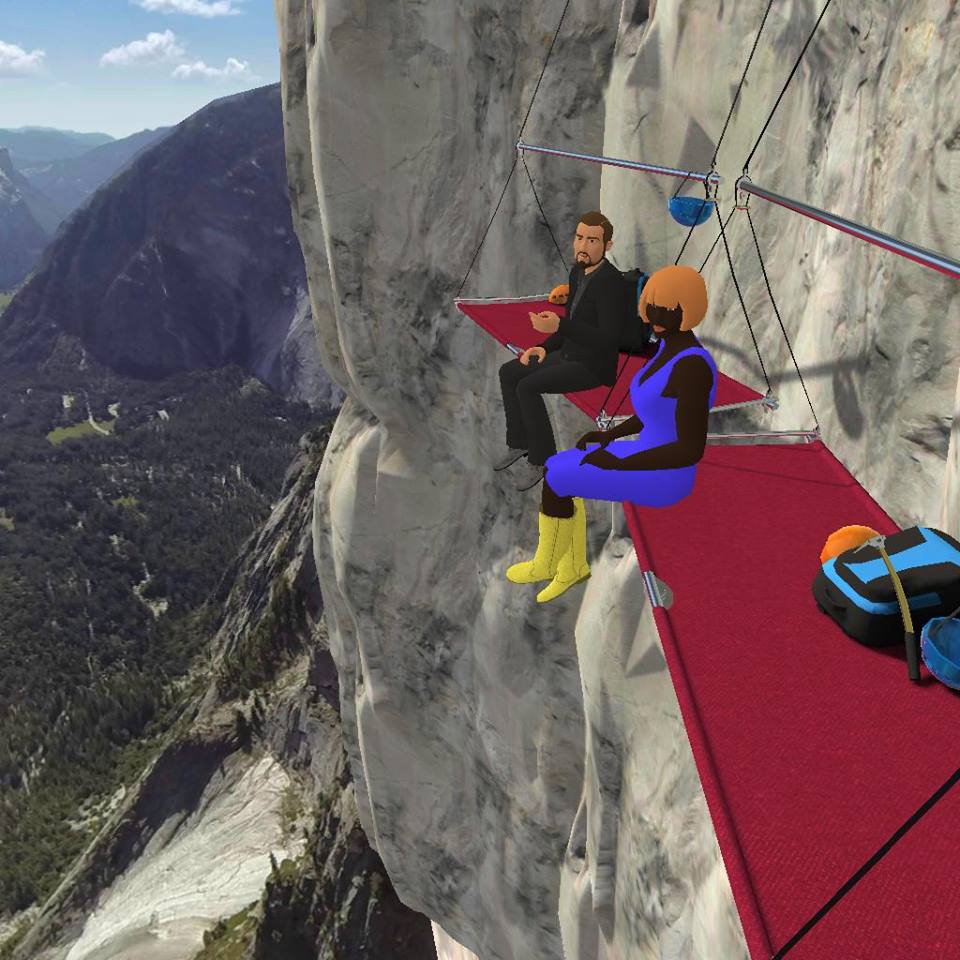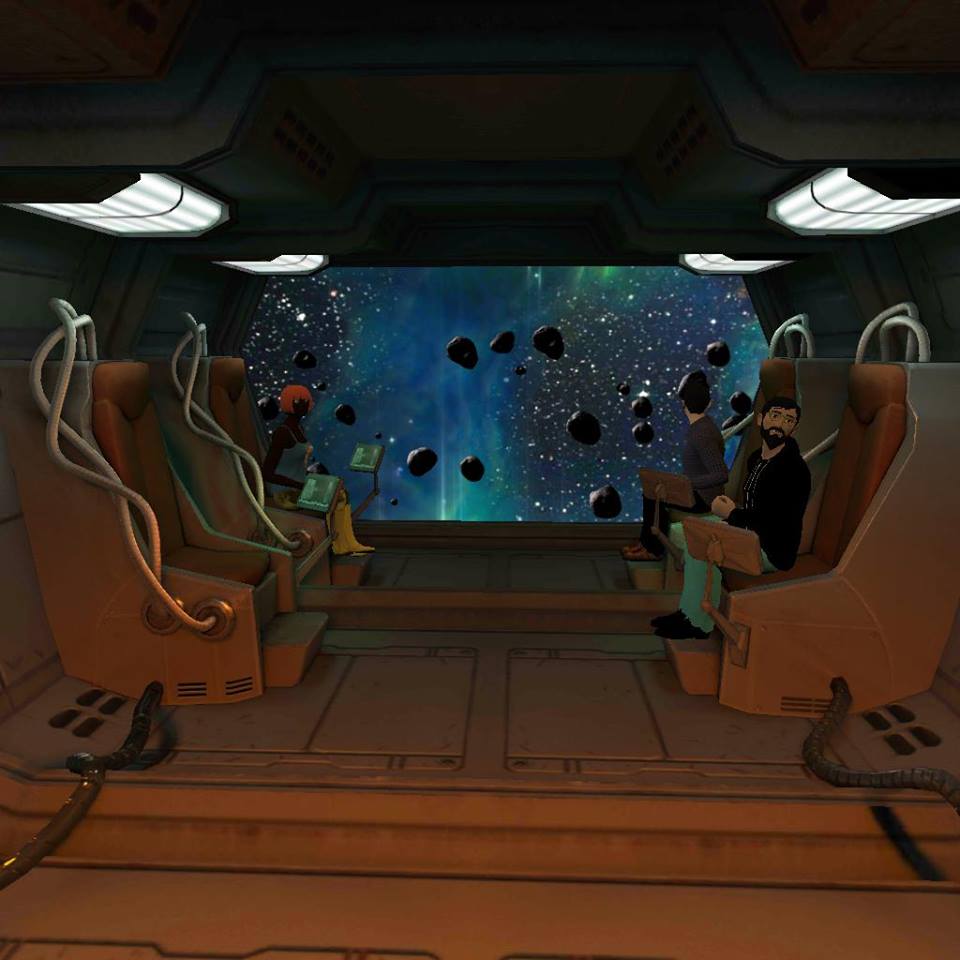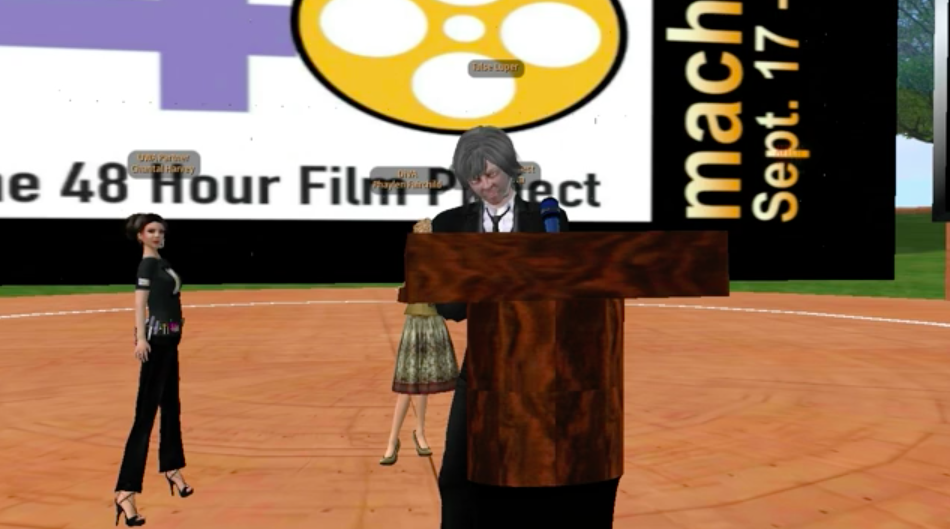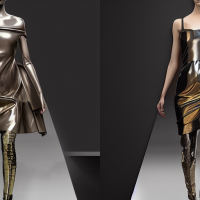
VR TECHNOLOGY
3D VR Environments have existed for some time. Ivan Sutherland implemented the first VR system in 1968, using wire-frame graphics and a head-mounted display (HMD) [1]. Since then, various VR systems have been implemented and are widely used in military, engineering, trainings, flight simulations etc. Only recently have VR systems become commercially accessible.
In 2015, several companies announced mass production of affordable VR headsets (also called Head Mounted Displays – HMD), display devices, which are worn on the head with a display optic in front of the eyes. The most popular among them were the HTC Vive with optional hand controllers and Oculus Rift. These devices require support of computers with powerful processors and graphic cards in order to render immersive 3D graphics and 360 degree videos, while simultaneously tracking the motion of the user.
During the same year, we were introduced to even more affordable mobile VR headsets – Samsung Gear VR and Google Cardboard viewer that can be combined with compatible smartphone devices. These two headsets are not compatible, and applications must be developed separately. Google Cardboard is the most affordable simple VR viewer, and is made of cardboard with lenses that can be assembled from low-cost components using specifications published by Google. Alternatively, it can be purchased pre-manufactured.
KEY FEATURES OF VR ENVIRONMENTS
In terms of functionality, virtual reality can be defined as a simulation in which computer graphics are used to create a realistic-looking world that responds to the user’s input in real-time, modifying the virtual world instantaneously [2]. This definition recognizes real-time interactivity as the key feature of VR environments.

In [3] were presented four key elements of VR: (1) physical and (2) mental immersion, (3) sensory feedback and (4) interactivity. The concept of physical and mental immersion can be also expressed through the term sense of presence – the sensation of being in an environment. Sensory feedback is based on the physical position of participants. Typical VR systems track the movement of the participant’s head, along with an object held by hand. There are many VR technologies for tracking movement. The fourth element -interactivity -also appears in several forms: one of them is the ability to affect a computer-based world (for example in Dungeon, a classic text-based massive multiplayer online role playing game (MMORPG) worlds were rendered via text description typed by players, and computer graphics were not required). Another form of interactivity is the ability to change one’s viewpoint and move physically within the virtual world.
Collaborative environment
The collaborative environment is an extension of the interactive element and refers to multiple users interacting in the same virtual space or simulation, and can be referred to as multi-presence or multi-participant [3].
One of the earliest online social networks, Second Life (launched by Linden Lab in 2003.) is a 3D virtual world where users interact via avatars (their virtual representations). They meet other residents, socialize, participate in individual and group activities, build, create, shop and trade virtual property and services with one another using virtual currency known as the Linden dollar (that can be exchanged for real currency). In [4] virtual words are defined as a combination of these elements: 1. synchrony: collaborative activities need synchronous communication, 2. persistence: a virtual world does not cease to function when users log off, 3. networked people: users interact with one another and/or with the environment, 4. avatar representation: any action taken by the user is actually presented as an action taken by the avatar, that is to say her/his digital representation, 5. networked computers: the required technical infrastructure.
In Second Life, users see their avatars as a second person and they use a desktop interface. With VR headsets, users can have a camera point of view – a first person view, as if they were in the head of their avatar. Sometimes they can see their hands, if the motion tracking is provided by additional controllers or other tracking technology.
Film Director Peter Greenaway gave a speech in Second Life on September 23, 2010, at the opening of the 48HFP Machinima film festival. He was represented by his 3D avatar. At the end of his talk, there was room for some Q & A for the audience [5].

SUPPORTING HUMAN COMMUNICATION
In Computer Mediated Communication (CMC) we distinguish synchronous and asynchronous communication, where synchronous is live and uninterrupted (audio, video chat, instant messaging, chat rooms), and in asynchronous, response time varies (e-mails, sms, weblogs). Some of the forms are more or less persistent since not all messages are logged, and we lose all the content when the dialog box is closed (for example, video chats are not logged in most applications).
A very important issue in CMC is the non-verbal part of human communication. Many CMC applications widely support the use of emoticons as a new means of online social communications. There are also technological challenges in CMC since the access to technology-based resources necessary for participating may be a challenge for some users. That is why it is necessary to prepare participants for CMC events via virtual tours and tutorials about technology and interfaces that will be used. They must be prepared for what they will experience in CMC. Misconceptions may result in participants falling behind and never recovering [6].
REFERENCES
[1] Sutherland, I. A head-mounted three-dimensional display.” In Proc. of the Fall Joint Computer Conference, 1968. AFIPS Conference Proceedings, vol. 33. AFIPS, Arlington, VA.pp. 757- 764.
[2] Burdea, Grigore, and Philippe Coiffet. Virtual Reality Technology. Hoboken, N.J: Wiley-Interscience, 2003.
[3] Sherman, William R., and Alan B. Craig. Understanding Virtual Reality: Interface, Application, and Design. San Francisco, CA: Morgan Kaufmann, 2003. Print.
[4] Virtual Worlds: Theoretical Perspectives and Research Methods. Retrieved August 14, 2016, from https://en.wikisource.org/wiki/Virtual_Worlds:_Theoretical_Perspectives_and_Research_Methods
[5] Peter Greenaway speaks at 48Hour Film Project Machinima 2010. Retrieved July 25, 2016. from
https://vimeo.com/15253336
[6] Kelsey, Sigrid, and Kirk St. Amant. Handbook of Research on Computer Mediated Communication. Hershey, PA: Information Science Reference, 2008. pp. 27 – 31.




